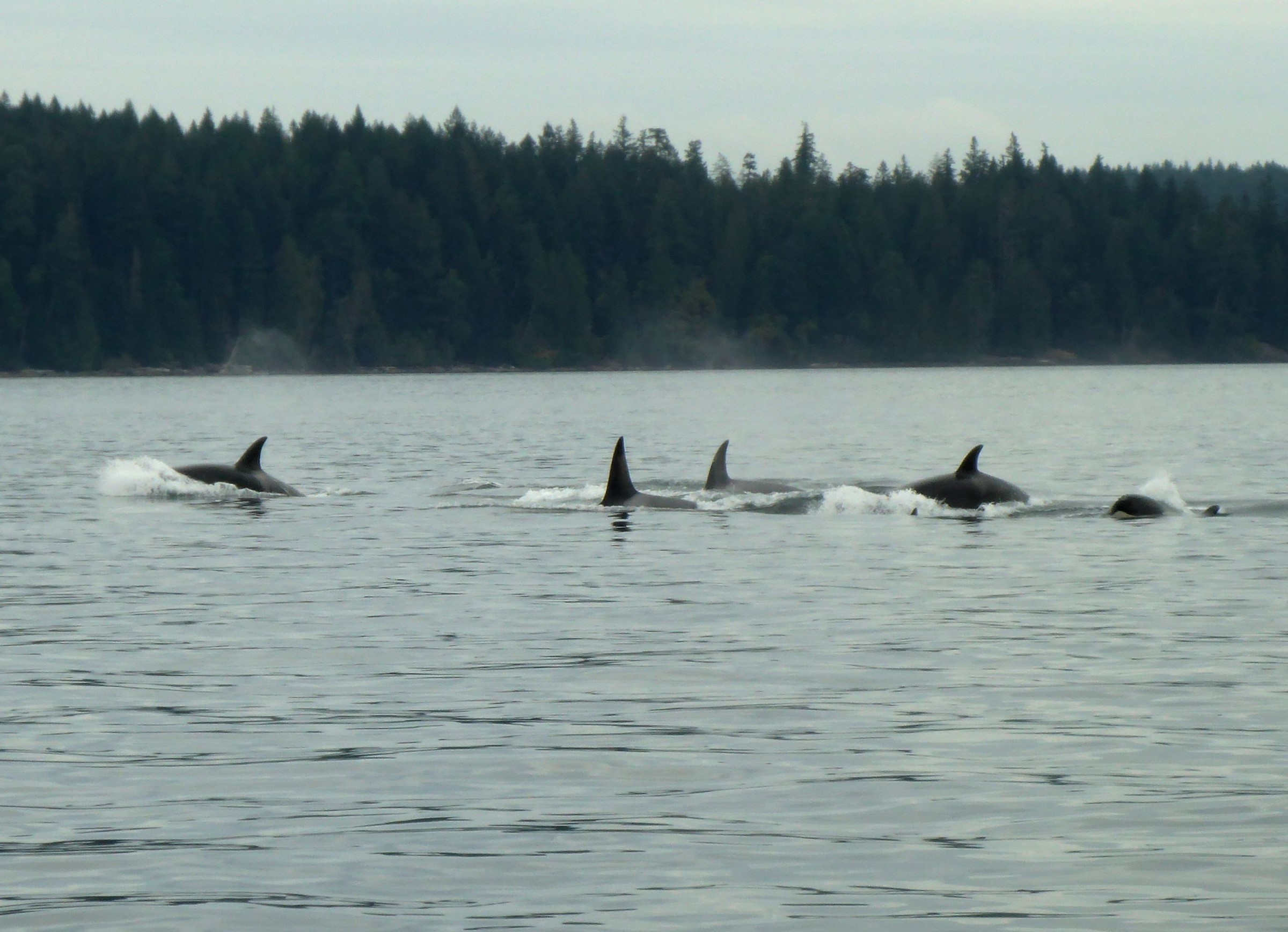
We enjoyed this lovely pod cruising past us as we headed into Campbell River. We counted about 14 in total. This is our third orca pod sighting. The first was from a distance as we approached SGang Gwaay in Haida Gwaii. That pod had an alpha make with a dorsal easly 6′ high. The second sighting was a pod a few miles north of this pod, also from a distance. It is always a pleasure when a pod of orca passes closes enough to hear their blowholes!
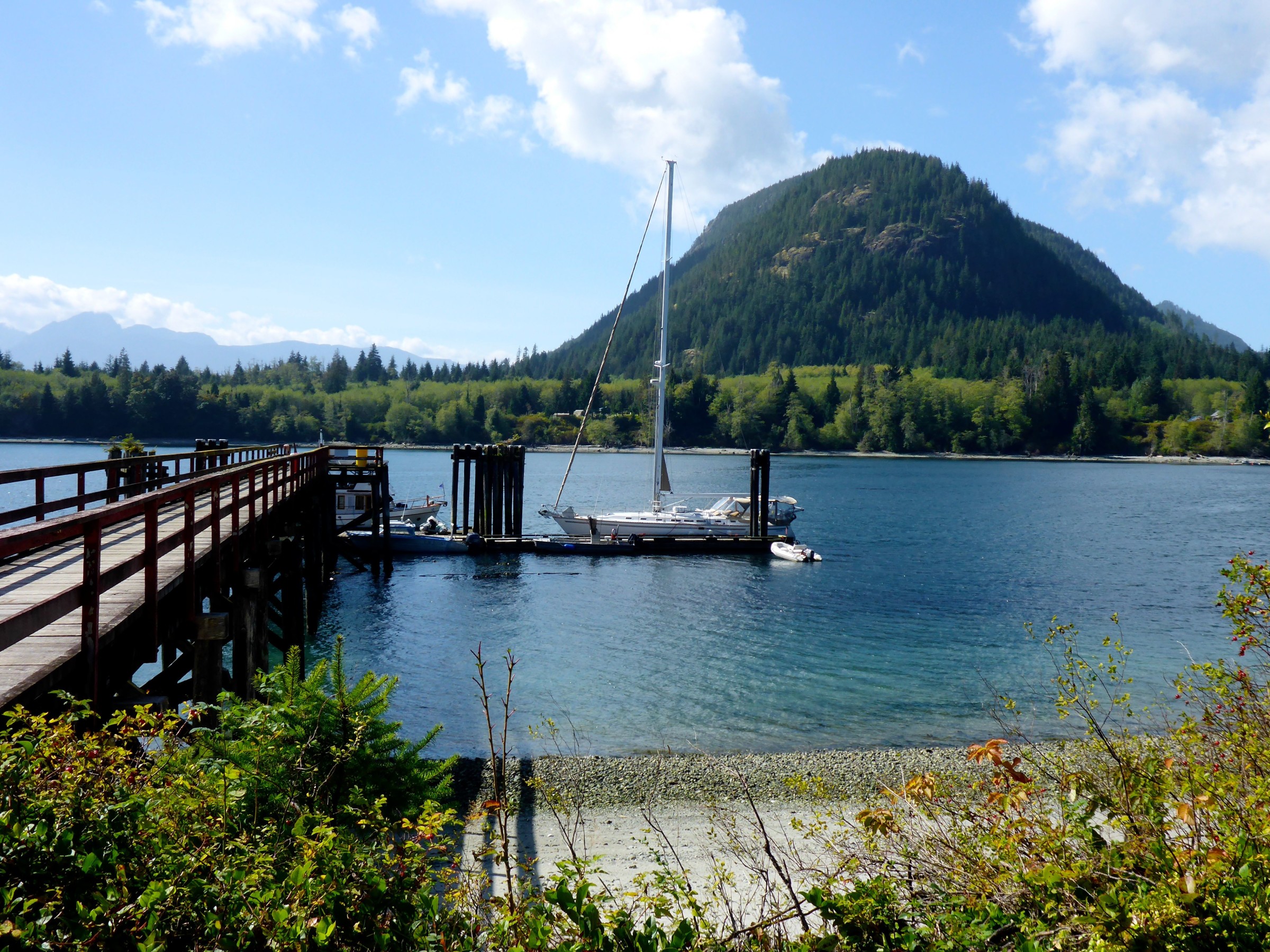
We left the docks of Port McNeil late in the afternoon and headed to Alert Bay. For whatever reason we had a hard time setting the anchor – it just dragged and dragged through the soft mud bottom. I think re anchoring is one of the most annoying aspects of boating. When we finally did stick it, it was too late to go ashore to we planned to visit this small community in the morning. We woke up to a torrential downpour. And it was down right chilly. As neither of us had any desire to get off the boat in this, never mind packing up two littles, we decided to make our run down Johnstone Straight and try to find summer further south.
We had a layover to wait out the flood and the sun peaked out for a few moments, as if to say YES- you are going the right way! When we stopped at Port Neville it was already dusk, the days are getting shorter quickly now.
We woke to a glorious sunny day at Port Neville and decided to head to the dock to explore the property. This homestead has been in the same family since the 1800s. It used to be the site of a store and post office, run in the family home until 1940. Now the building remains and functions as a sort of museum when Lorna is onsite. She is the great grand daughter of the original homesteader. The government dock lands directly on her private property, but she has it open for public enjoyment. We sure enjoyed the swing and walking the sandy beach out front. We left that evening on the flood tide and sailed to Chatam Point.
- Kelp
- Teeming with life
- Weeee!
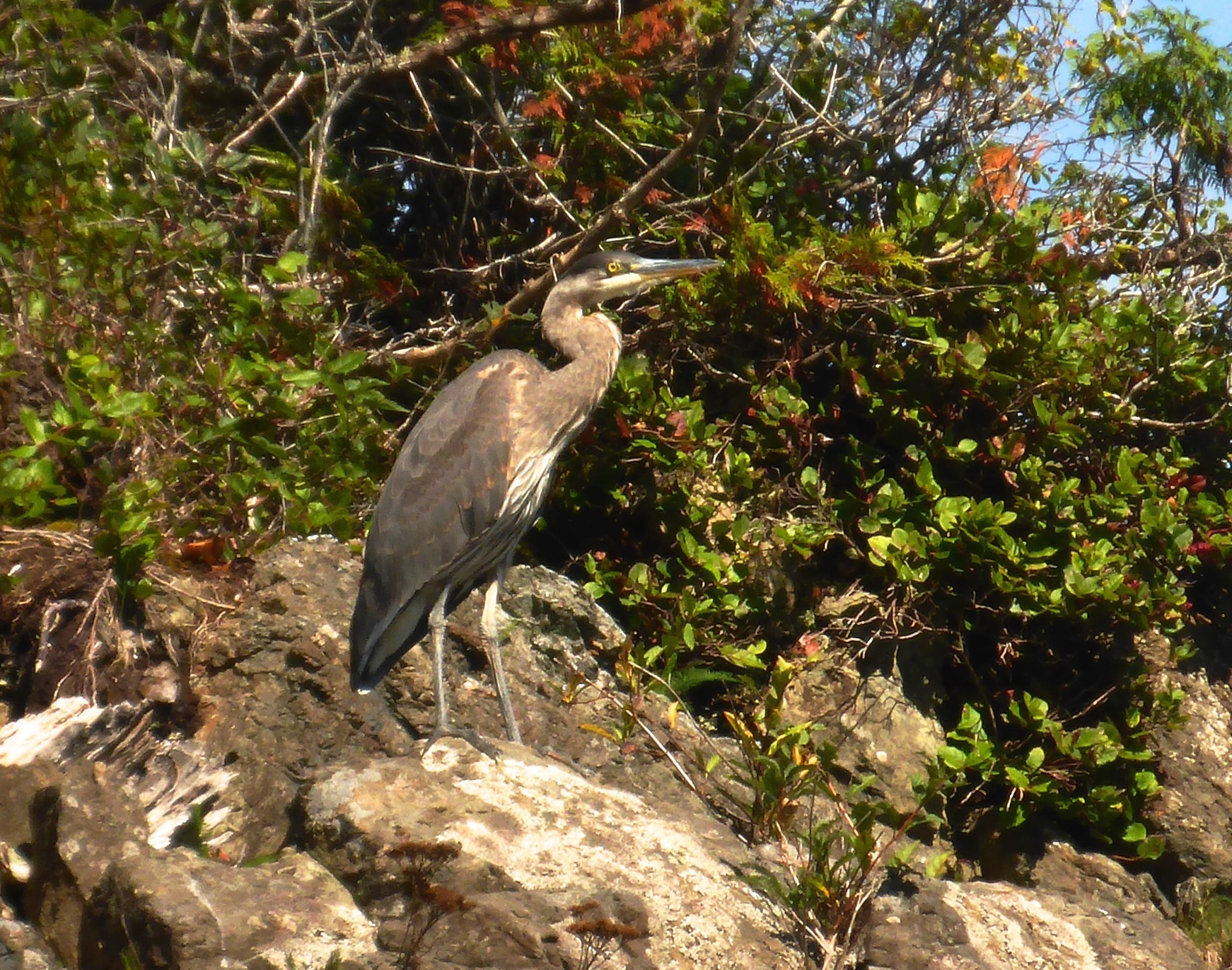
We landed in Shusharti Bay and watched the sun burn up the fog and turn the skies a brilliant shade of blue. Everyone is always a bit tired after an overnight so the day was pretty relaxed. We toured around the islets in Otto and ventured up the creek a short ways at high tide.
For the first time in a while we watched cruising boats motor by the anchorage. The next morning Kolby headed to Dylan rock for an epic dive – octopi, wolf eels, ratfish and huge schools of fish while Fynn and I walked a bleach bear amble along the shore, turning over rocks and gobbling whatever he was finding beneath. Midday we made a pit stop at Hussar Point to soak up some sun on the beach and look for a cave that is somewhere in the vicinity. No lock on the cave, but we found few good pieces of beach glass. We anchored just outside of Port Hardy and discussed our plans. We just aren’t sure if we want to race through this part of Vancouver Island or explore it a little more. Either way we were headed to Port McNeil to stock up on food (the fridge was empty) and go from there.
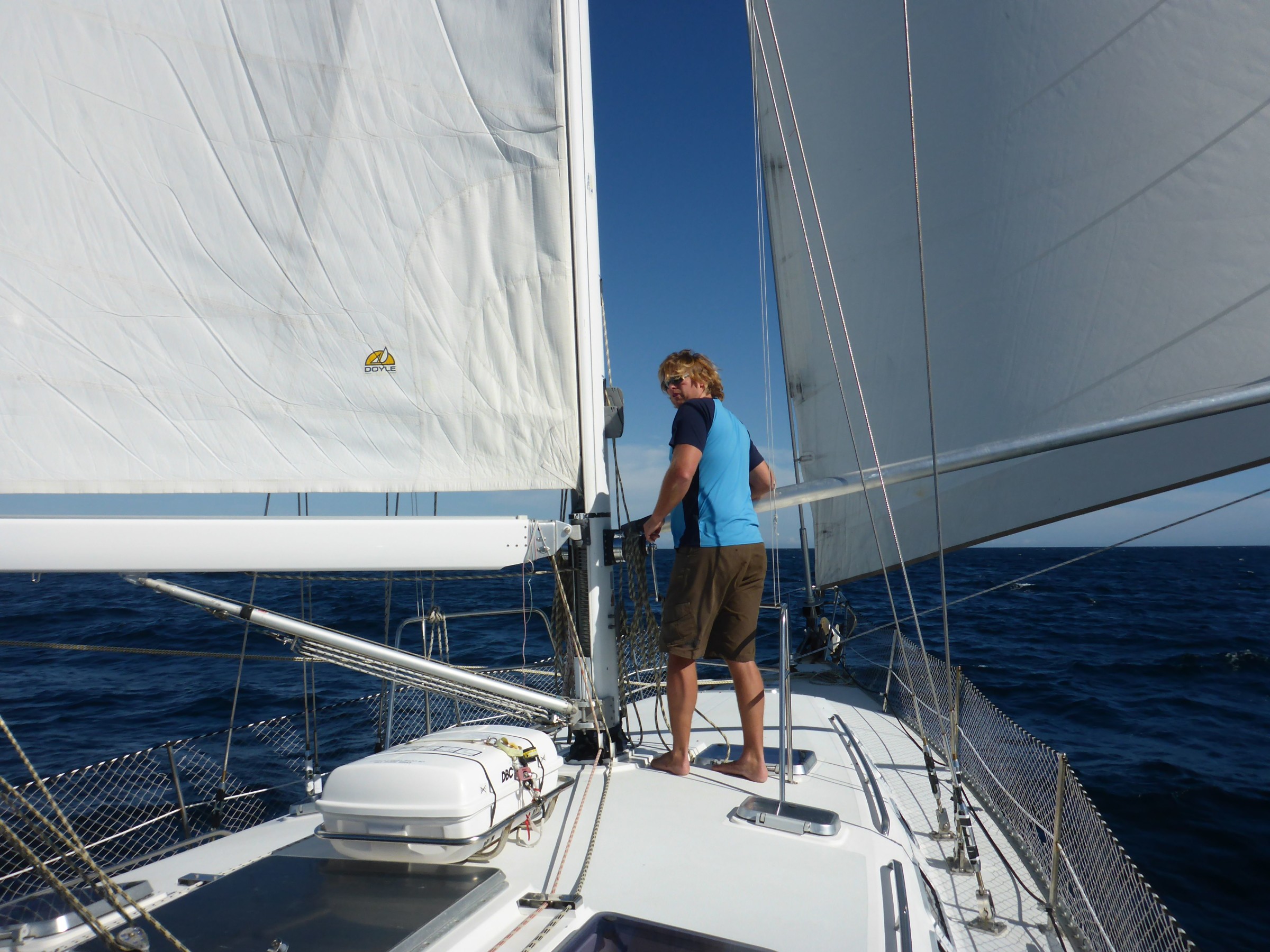
Was perfectly uneventful. We sailed downwind half the way and motored the other half. The seas were small. We had waffles for dinner and watched the albatross’ swooping through the wave troughs. There was a glorious sunset and an uneventful night. As we crossed Niwiti bar in the morning we watched a dozen or so sea otters check us out. We dropped the anchor at 1 pm and revealed in the sunshine. That is a good and easy 24 hour trip with two littles!
- MMMM dinner
- Happy to see these guys!
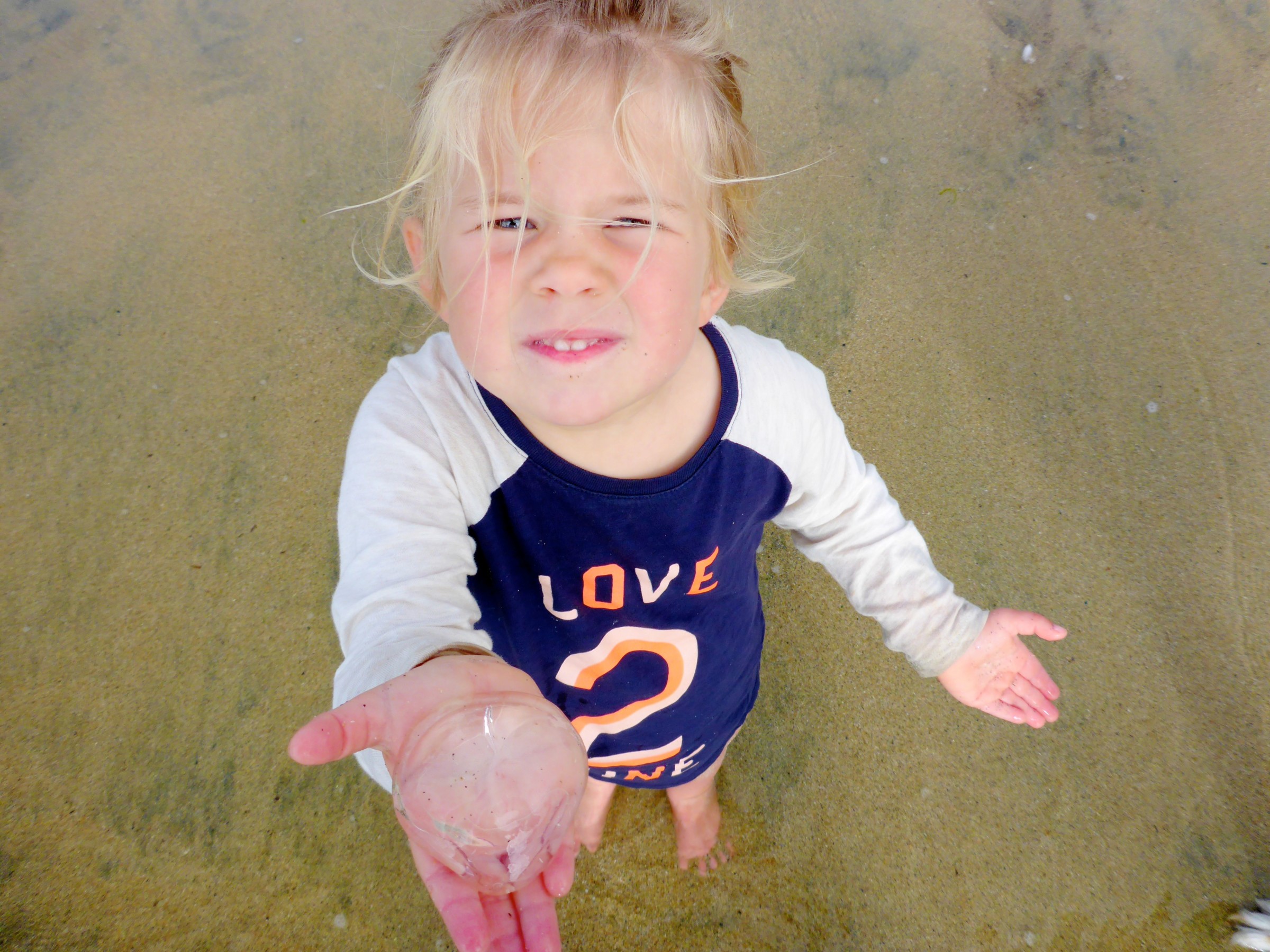
Our last night in Gwaii Haanas was on the southern tip near Cape St. James. It is hard to imagine a place like this exists and remains so pristine. The beach is velvety smooth sand and runs for over a kilometre. Several streams empty into the bay and we saw deer foraging among the rocks. Following a stream up the beach we set up camp among the smooth grant boulders and played in the sand and stream. We also washed the diapers! The sun was warm and the beach combing was good. What more could you want before a 24 hour crossing?
- Makings of a beach boy
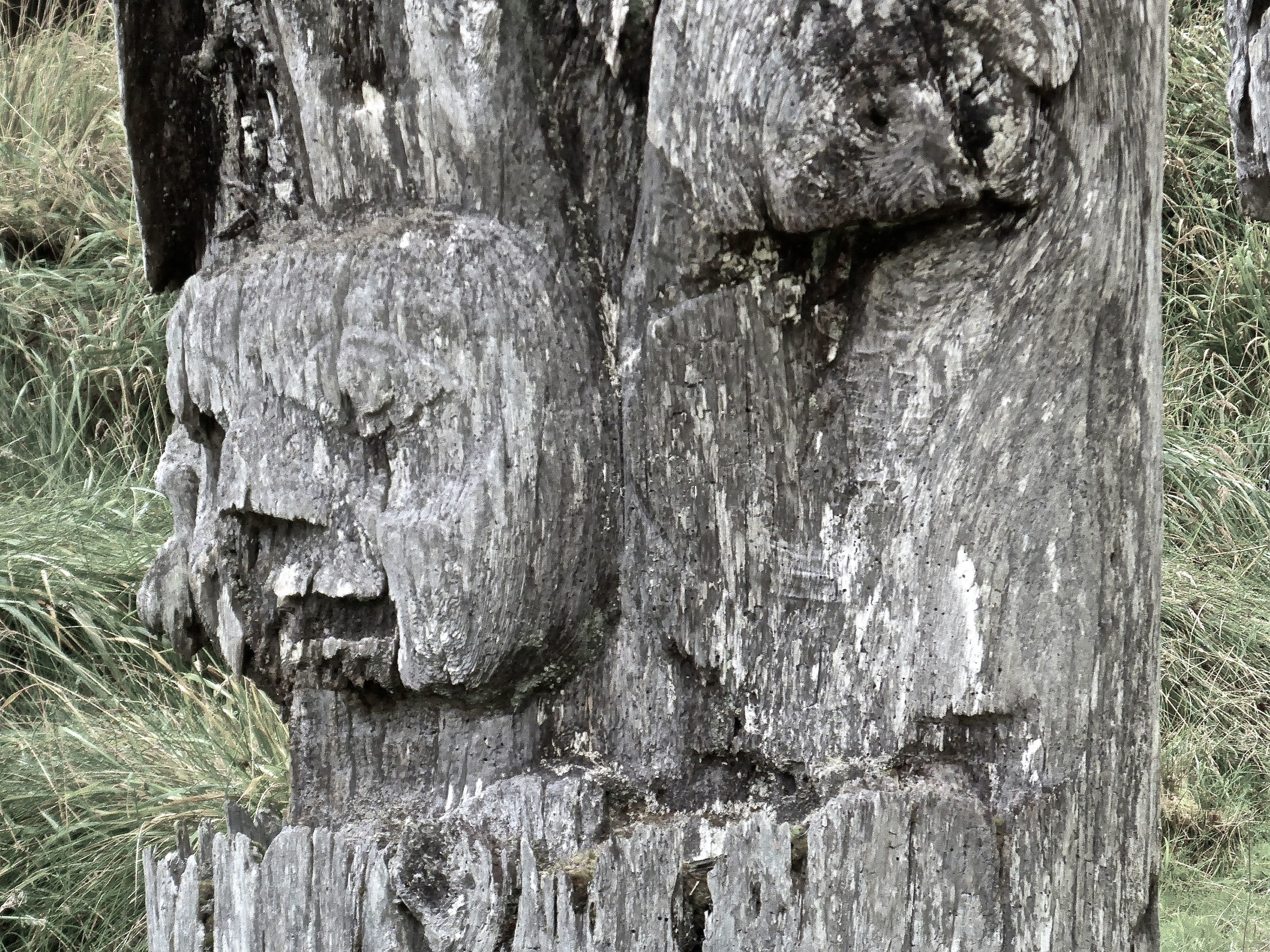
S’Gaang Gway meaning Wailing Women, is the Haida name for Anthony Island, and is name such for the sound of the water wailing through a blowhole on the island. It is also the site of the best preserved Northwest Native village in the world and is an UNESCO World Heritage Site. The other name for this village is Ninsits, a white version of the name of a chief from this village. S’Gaang Gway was one of the last inhabited villages and had 20 long houses before it was abandoned in the 19th century. Today the presence of this large village can still be felt. Tucked into a picturesque bay it is sheltered from the waves and from enemies. Now one has to walk about 10 minutes through the moss covered forest to reach the village.
- Walking to the site
- The perfect hideaway
Stumbling out from the trees onto the beach we are immediately struck by the memorial poles, still standing proud as they have done for the last 200 years. Of all the sites in Gwaii Haanas, this is the only one where Haidia permitted the poles to be re-centered, enabling them to stand longer than their typical lifespan. Traditionally a pole would stand until it fell and their it would lie. It would not be re-raised.
The poles remaining at SGaan Gway are all mortuary poles. In Haida tradition when a chief passed he was bound into a curled up position and placed in mortuary house to decompose as his pole was built. This process took 1-2 years. When the pole was ready to be raised he was placed in a bentwood box which was mounted to the top of the pole. The boxes no longer remain, but the poles stand to preserve the chief’s stories and crest and to speak of his great wealth.
SGaang Gway also has two large house pits remaining, one with it’s corner post still keyholed into it’s beam. The size of trees used to build these home were outstanding. At the front of each longhouse a frontal pole would stand. The frontal poles from SGaang Gway were all removed by the Haida in the 1980s to be preserved in museums around the world. A small door would be located several feet in the air and was just big enough for one man to climb through. This was for security purposes. Any enemy attempting to break into the house could easy by killed by men waiting on the other side of the door and dispatched before the next intruder entered.
- Keyhole beam
- Large wall beam
Haida took many slaves from nearby mainland tribes, especially from Bella Bella. However slaves were apparently granted a very decent lifestyle and could marry into the Haida tribe. Any child born would take it’s mother’s standing in the tribe. Haida are a matriarchal society with crests and linages always following the mothers side. Therefore the chiefdom would not go to the chiefs son, but to a nephew on the the mothers side, raised from birth to become the next chief. There are two tribal crests, the Raven and the Eagle. Just as with the Tglingit in Alaska, a Raven must marry and Eagle and vice versa. Also an Eagle chief may only hire Raven men to work on his longhouse, to ensure the wealth remains distributed through the village. Beneath the Raven and Eagle crests have many other small family crests, such as the bear and the frog and the beaver. A Haida must be very careful which animal crests they wear, as they can only wear one that in under their correct family crest.
- New life from old posts
The Haida valued wealth and enjoyed displaying this wealth not only through potlucks and totem poles, but also through copper shields. However I find their value of songs and dance as wealth the most interesting. Song and dance could be given, like other physical commodities and once given the givers could no longer perform the dance and song. In a culture that had no written history, these songs and dances were highly highly valued.
Haida culture came alive for us at SGaang Gway through the stories that Ken, the watchman, told us. He was a treasure of knowledge which he happily shared as we meandered through the site. Although the kids made it hard to feel the presence of the past we felt privilege to be able to visit this place first hand.
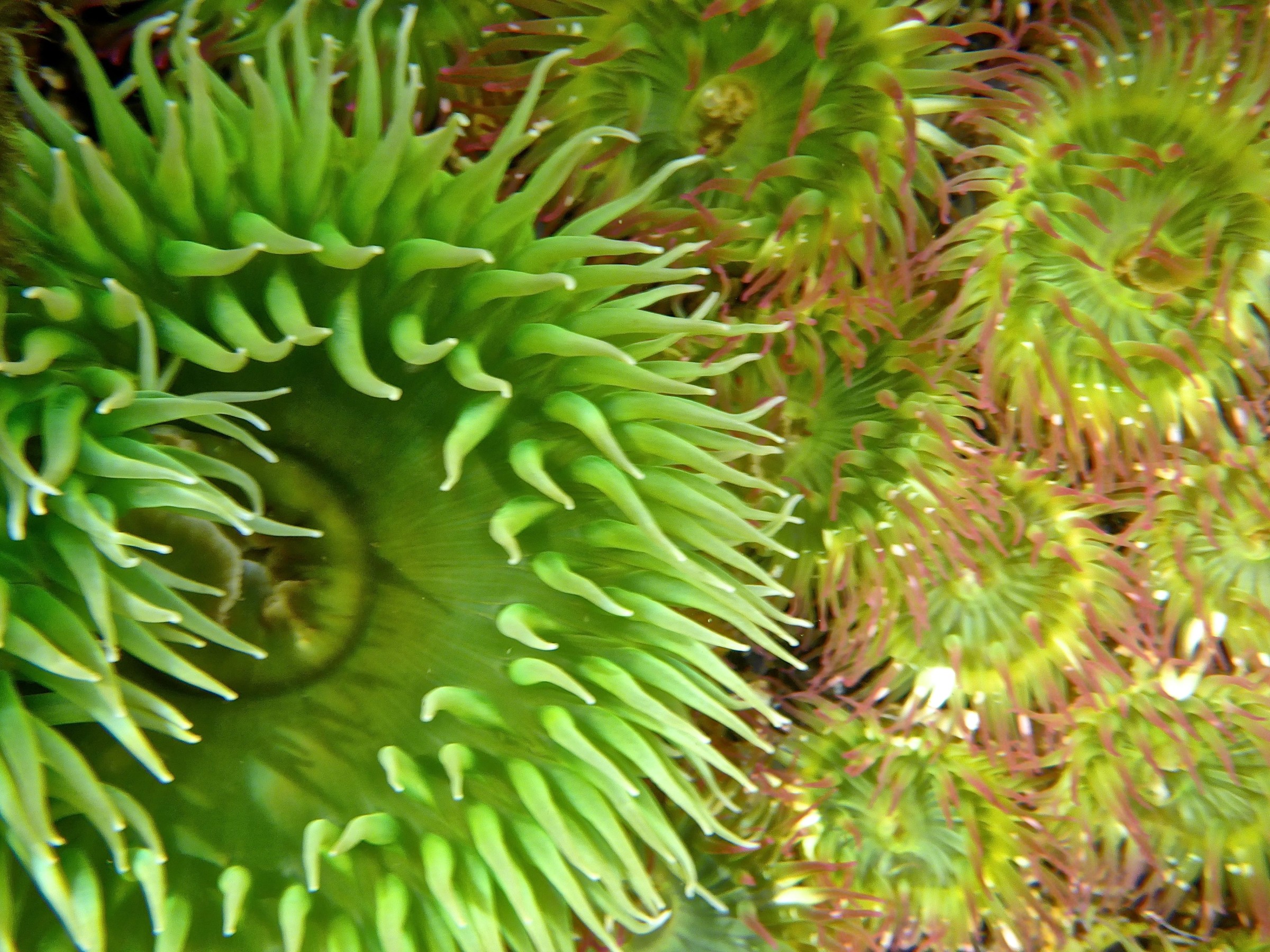
We headed for the mooring ball at Dolomite Narrows to check out the situation. This is a drying channel at low low tides that runs very quickly at higher tides. We planned to make the transit at slack on a rising tide. When we arrived at the mooring it was clear that the tide was near slack, and Kolby figured there was enough depth in the channel so it was go time. Kolby hopped in the dinghy to guide us through, with me at the helm. It was intense to say the least. At one point I say 6 feet on our depth sounder. Thank god my visibility was poor and I was so focused on Kolby in the dinghy, otherwise I might have noticed the rocks that he was guiding me around and really freaked out. We also had some current with us which would cause me to drift quickly off my transit line. As I had a hard time noticing this drift, Kolby would come on the radio with “Kristine you are drifting to port, hard to me please.” And I would try to move as quickly as I could to him, but not wanting too much speed either, should I find a wayward rock under my keel. Needless to say the adrenaline was pumping.
Safe on the other side we anchored in Bag Harbour and Fynn and I headed back to the Narrows to explore it by dinghy. We found lots of sea stars, finger kissers (aka anemones, Fynn’s new favourite), and saw a young buck swimming across the channel.
Back in Bag Harbour we went exploring after dinner, delighting in seeing a bear ashore and finding a grove of old growth cedars near the river. We tried to net a fish in the river but were hugely unsuccessful. No salmon for us.
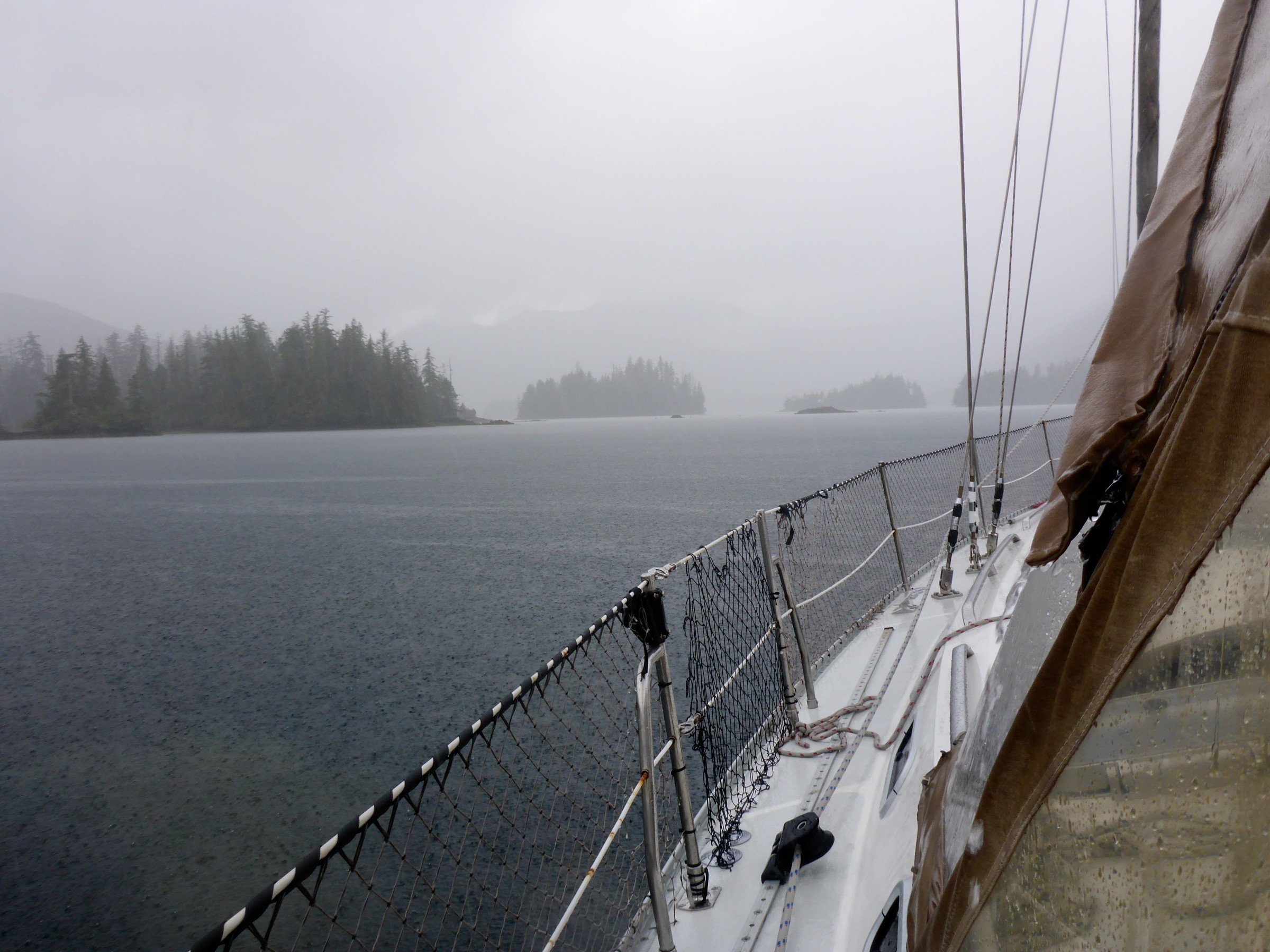
It has been raining. And I mean pouring. Just immense amounts of water falling from the heavens. The watchmen are all very happy to have this rain. It has been a very dry summer and the river levels are low, causing salmon to wait at their mouths (as we found). The immense amount of rain will help to raise the river levels and let the salmon up to spawn. We however are less thrilled about the rain. We do ok for the first three days, but by day four we are done. The movies come out and we hunker down and wait for the rain to abate, hoping the sun comes out before tempers run out of control.
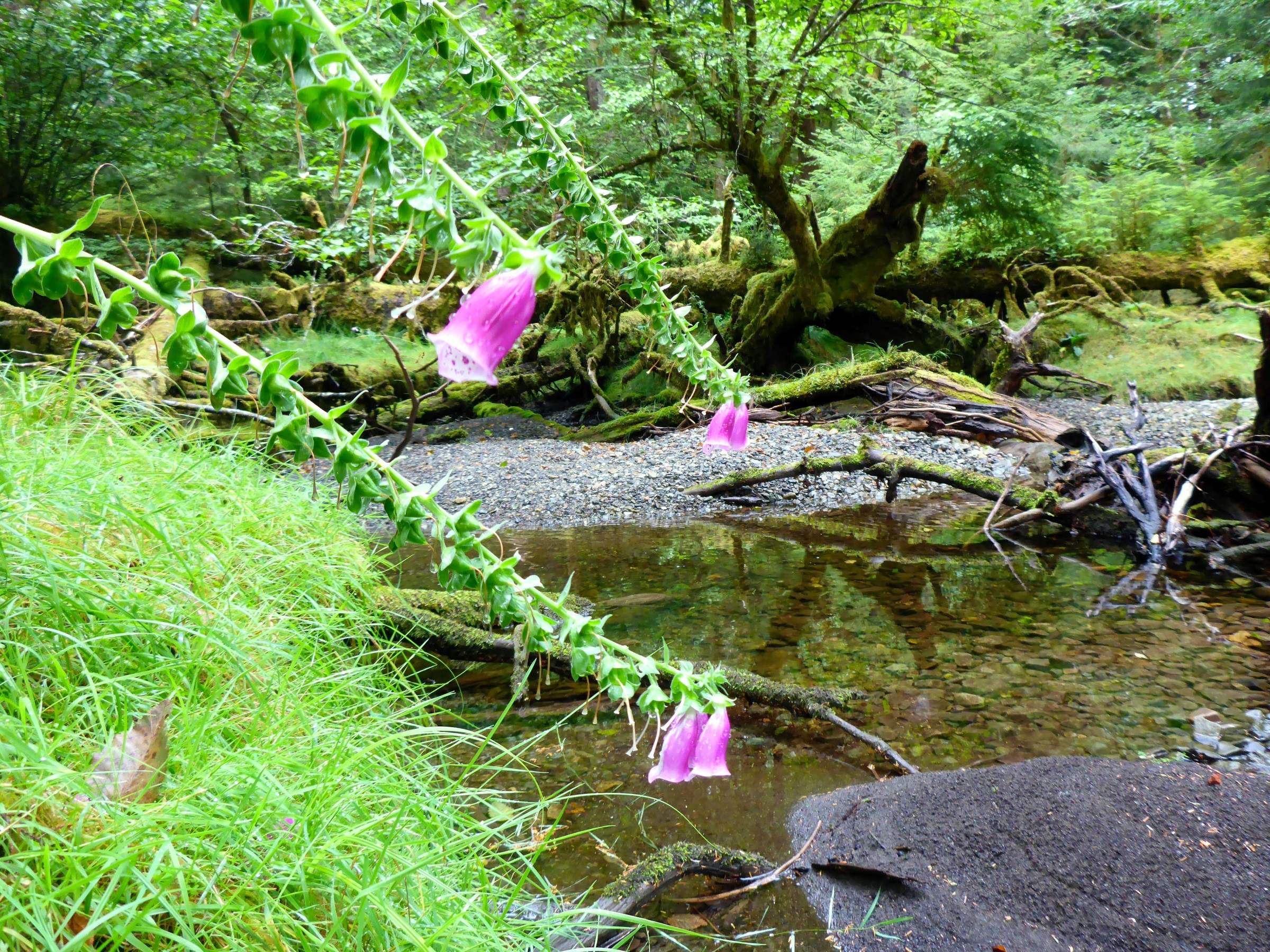
Our home afloat is just that, our home, where everyday situations occur. We laugh and cry and fight and make up. We argue about bedtimes and we have dishes to wash and dinners to make. Sometimes these little details end up consuming our days and we forget that we are living these details out in some of the most stunning places. One has to only go out to discover this. So we made an effort between the bouts of rain to go and explore- the shoreline, the shallows, a river. And it never disappointed.
- Go hug a tree
- River Walks
- Happy Pup
- Happy Girl
Although the Hot Spring dried up after the earthquake that shock the island 3 years ago, they have slowly been returning. Today there is a perfect pool for kids and a barrel to soak in water as hot as you wish it to be. We splashed in the pool then headed to the barrel ‘tub’ to wash up and warm up.
We were lucky enough to have the place to ourselves. One of the watchmen, Clayton, was carving a small eagle totem. After chatting with him for a bit we struck a deal. He would carve us a small paddle and in exchange we would given him the large abalone shell we found in California. We were to return tomorrow to complete the trade. Haida have a long history of trading for Californina abalone. They grow much bigger than their northern counterpart and as such have thicker shell that can be worked into many types of art. That night was incredibly wild. We were on the mooring ball at Ramsay Bay and the wind was howling. We had 20 knots in our little bay and it was forecasted to blow 40 in the straight. We were jerking around like a wild stallion at its bit on our short mooring line and I could not sleep a wink. And it was pouring buckets. I kept envisioning us breaking free and smashing the rocks at our stern. Needless to say we had a slow morning. At some point we realized we had left one of Fynn’s toys at Windy Bay. The wind had abated but the seas remained substantial so Kolby took Otto down to pick it up by himself. We returned to Hot Spring at about 1 pm and Clayton was just putting the finishing touches on the paddle. It was lovely. He was also happy with the shell so the deal worked out well for both of us. We had found our paddle and have a lovely story to go with it.

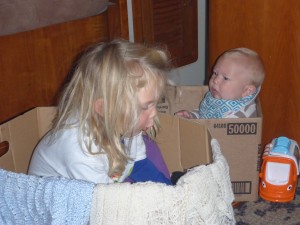
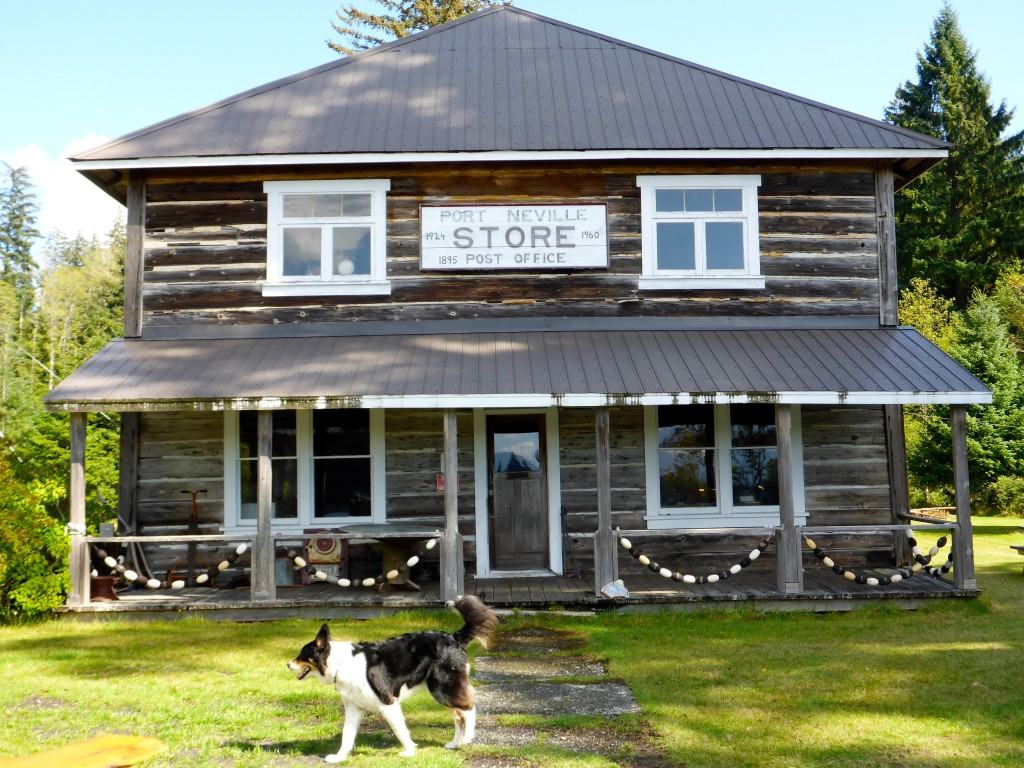
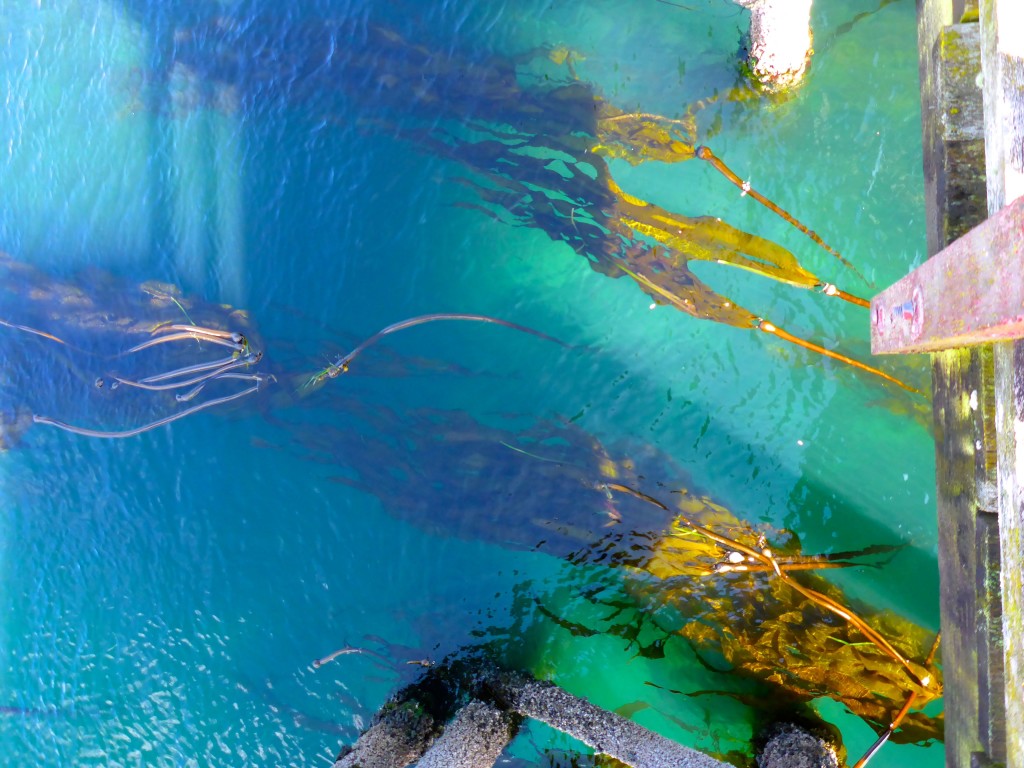
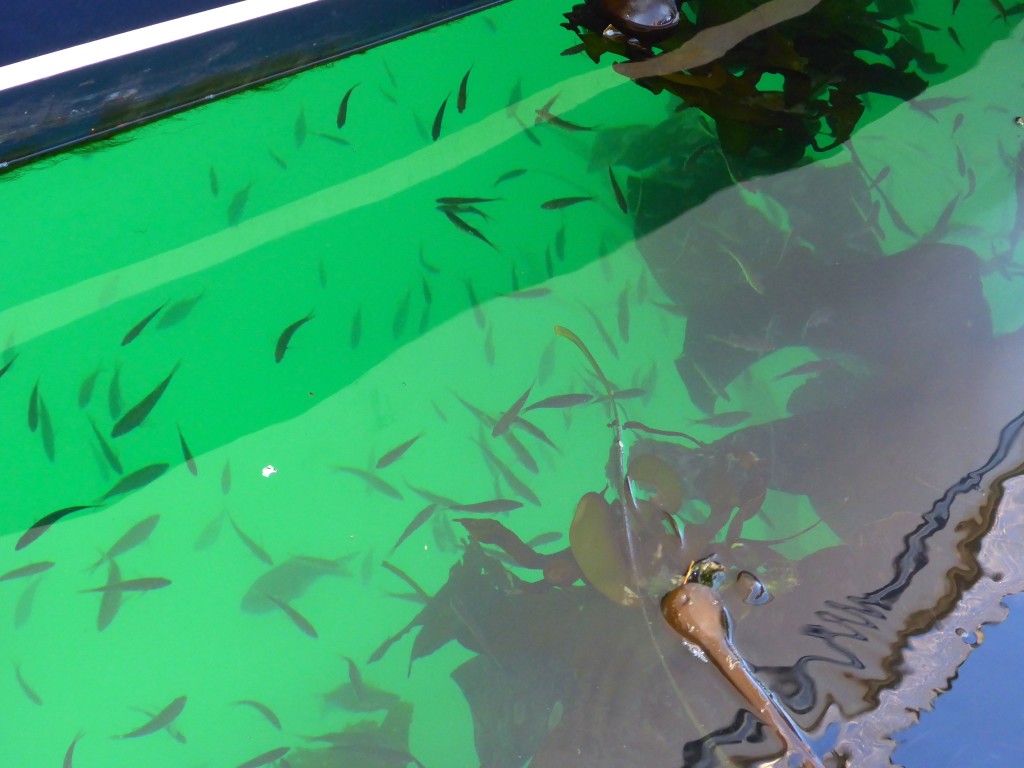
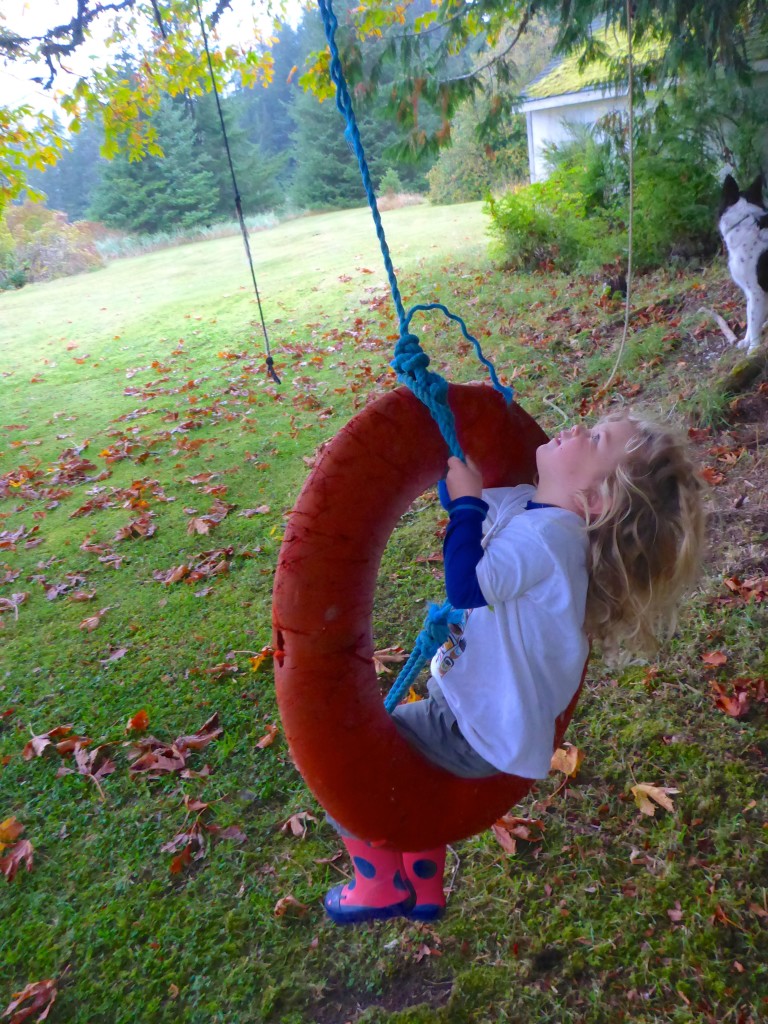
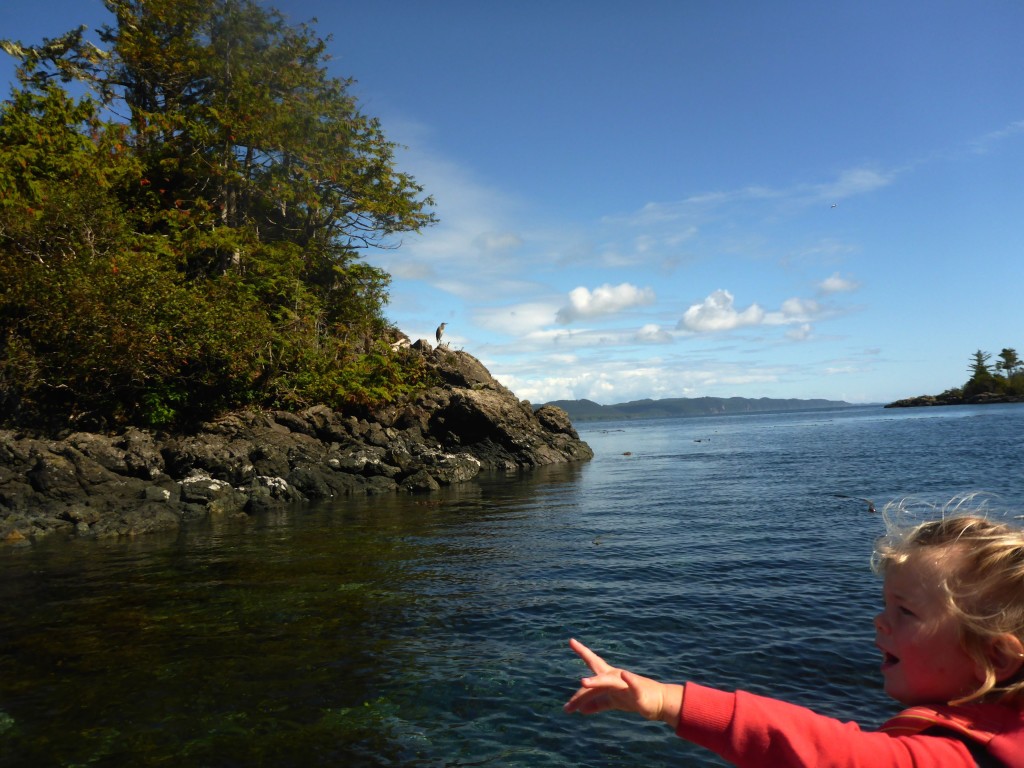
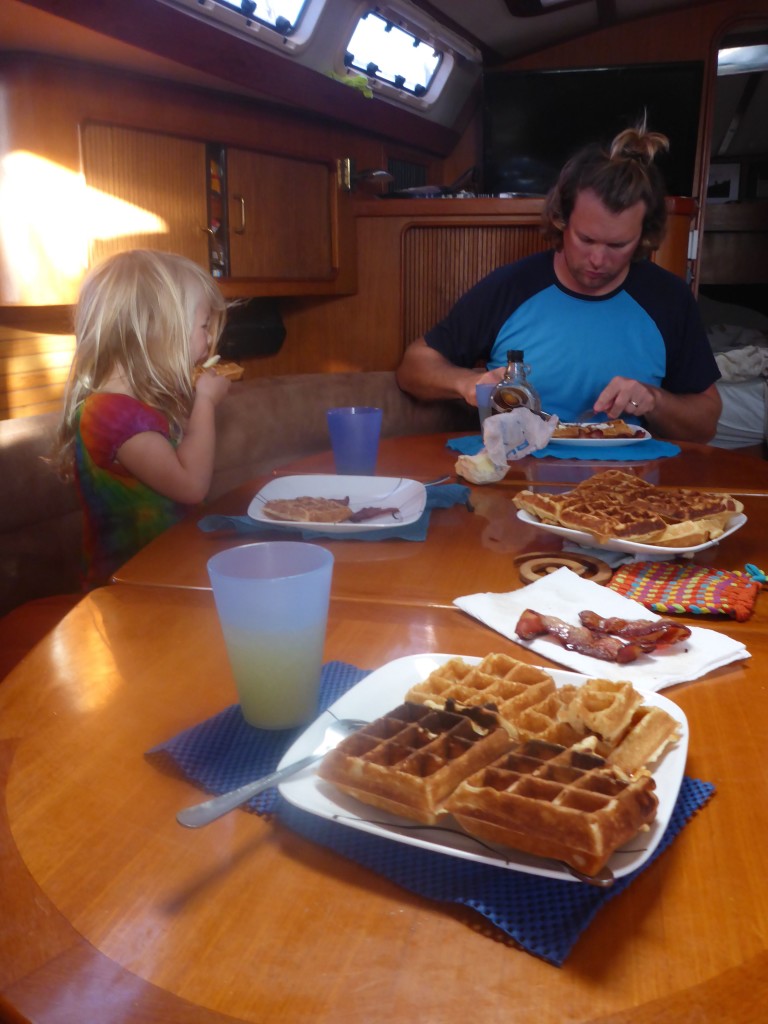
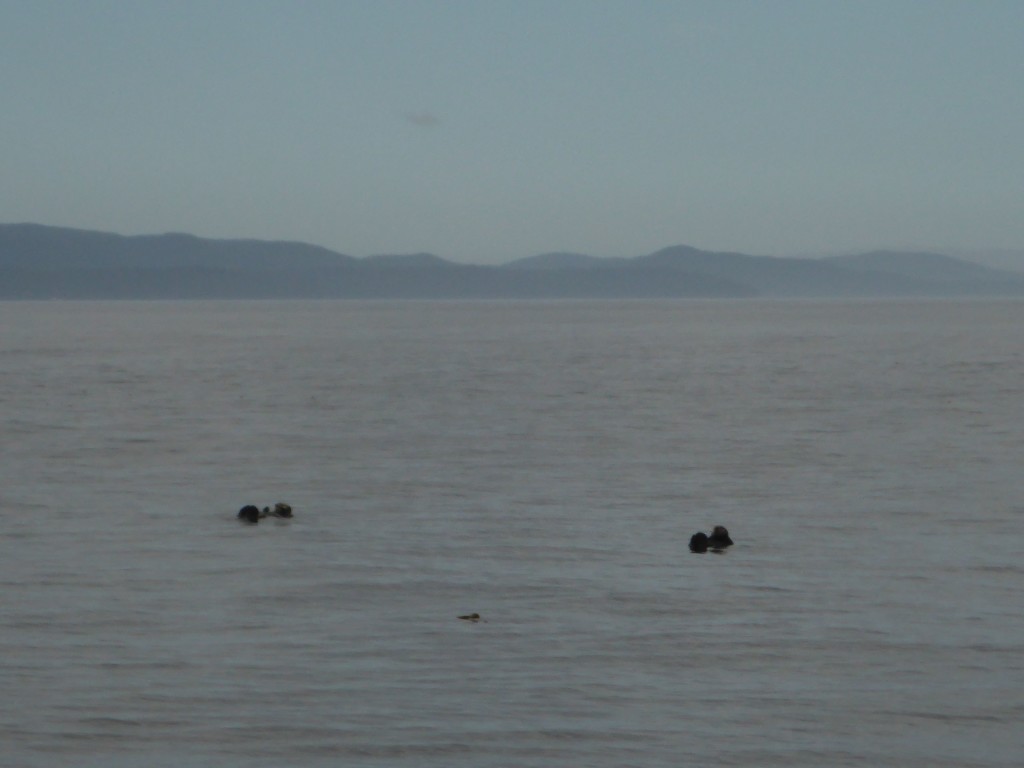
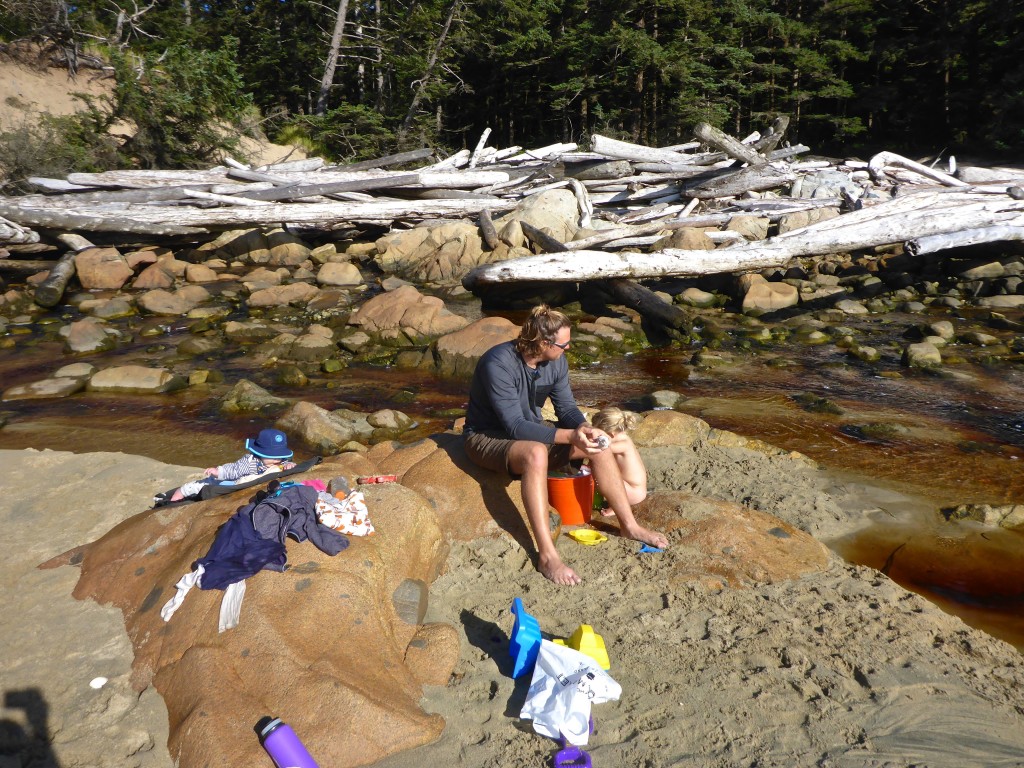
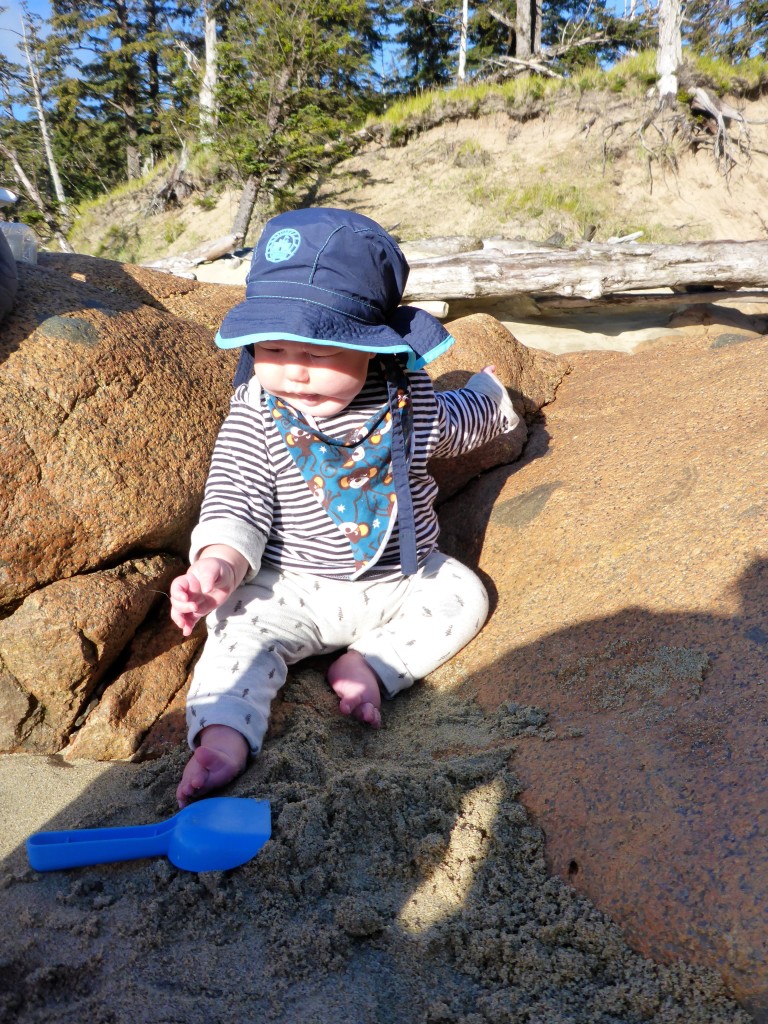
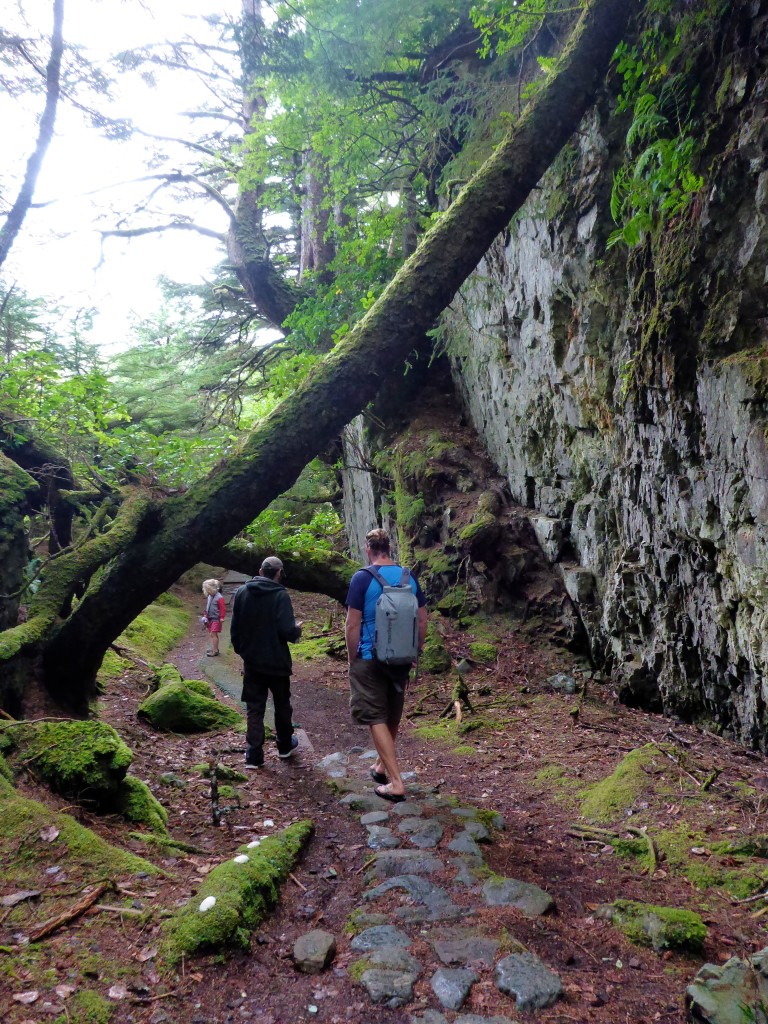
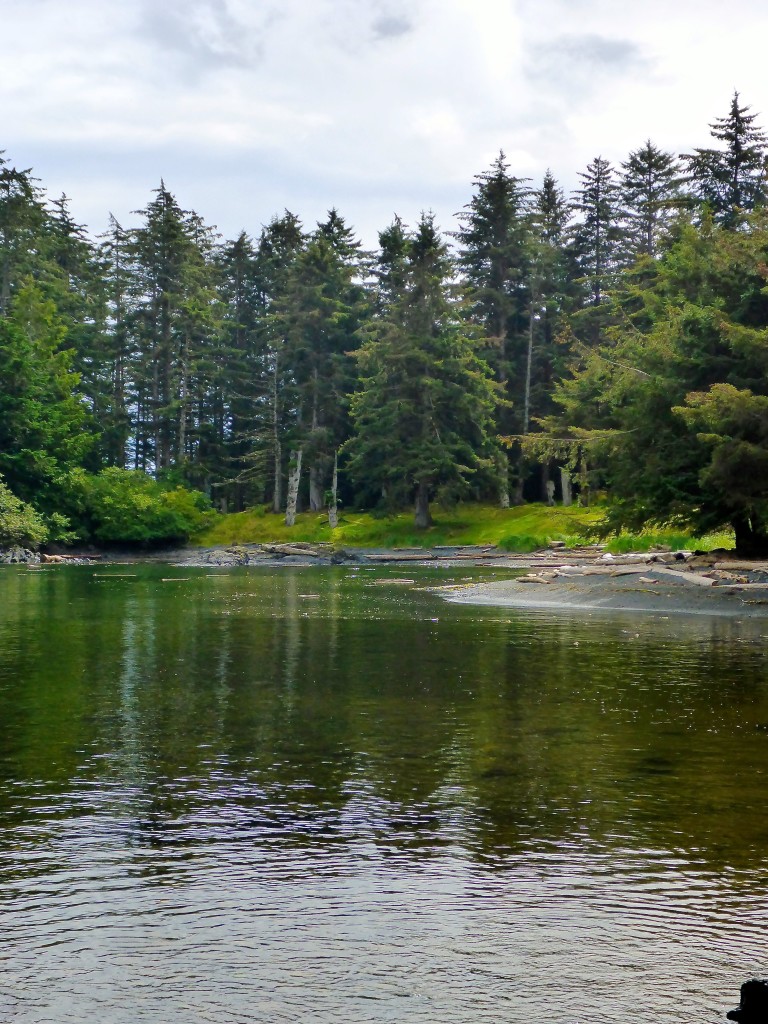
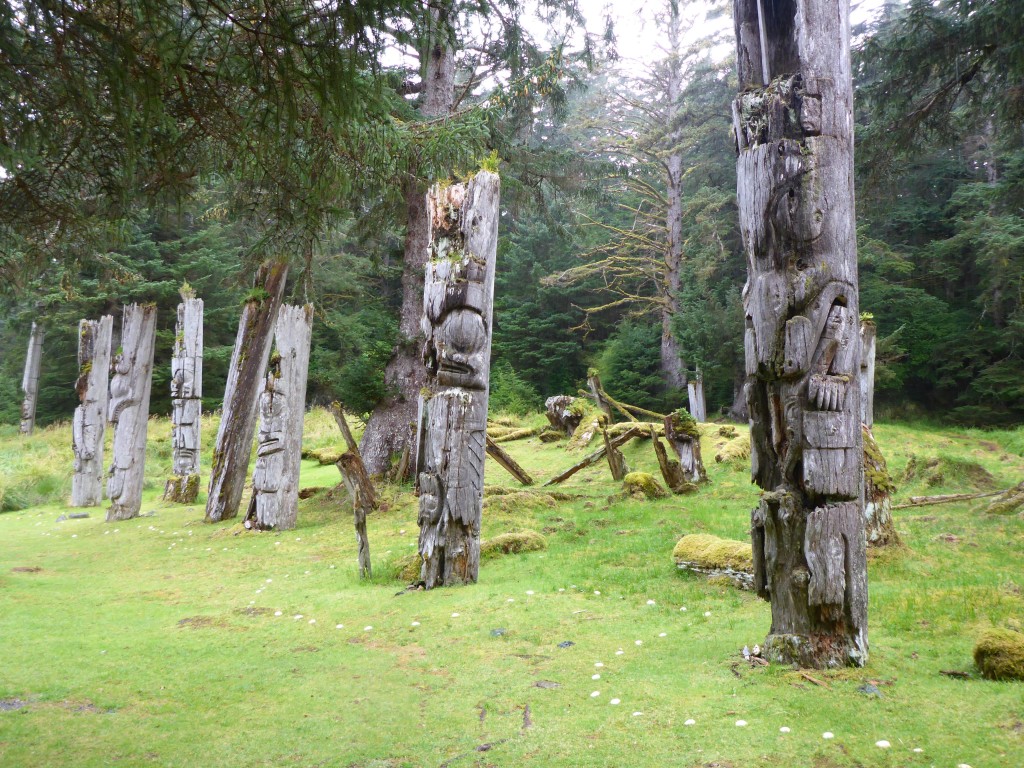
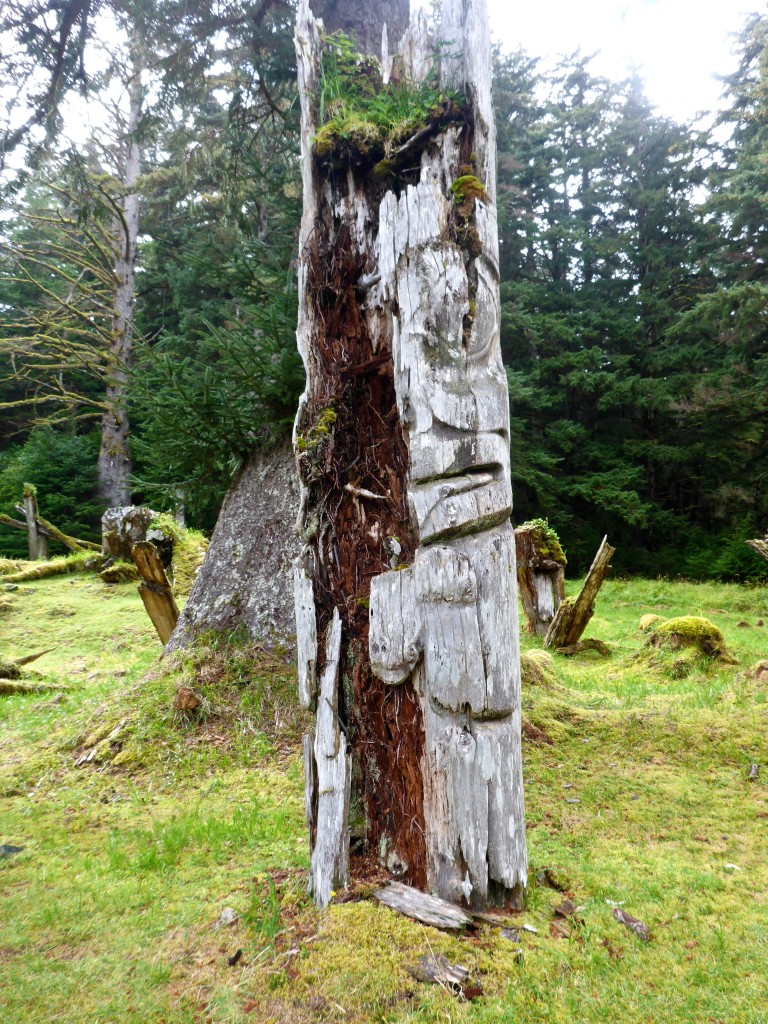
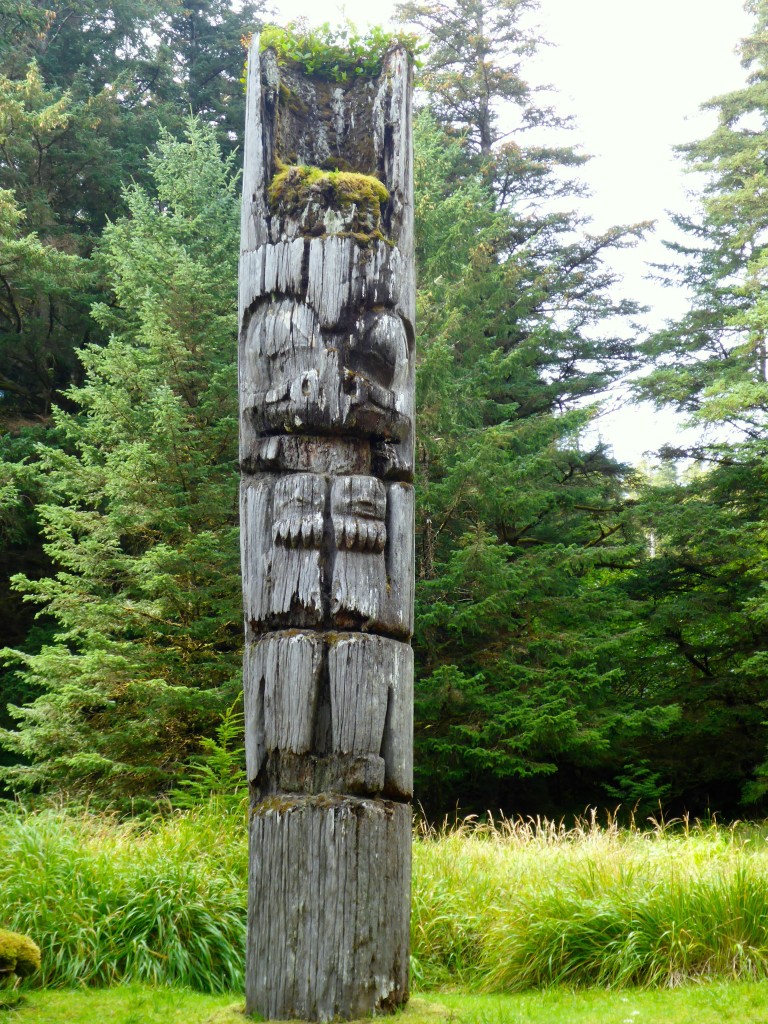
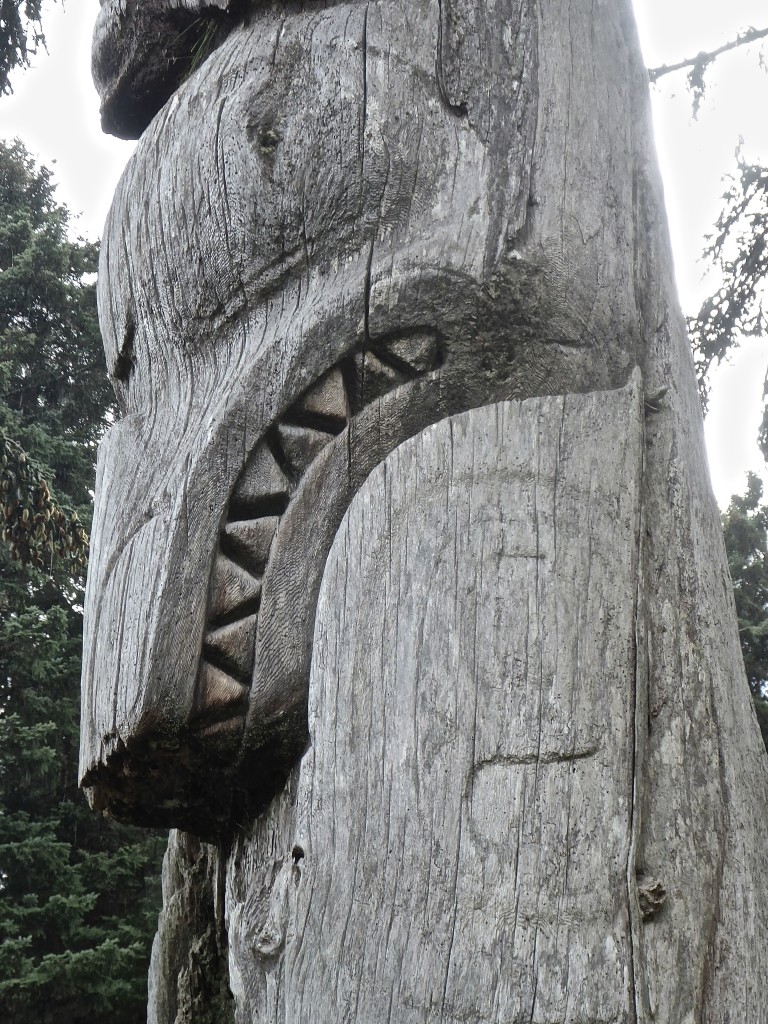
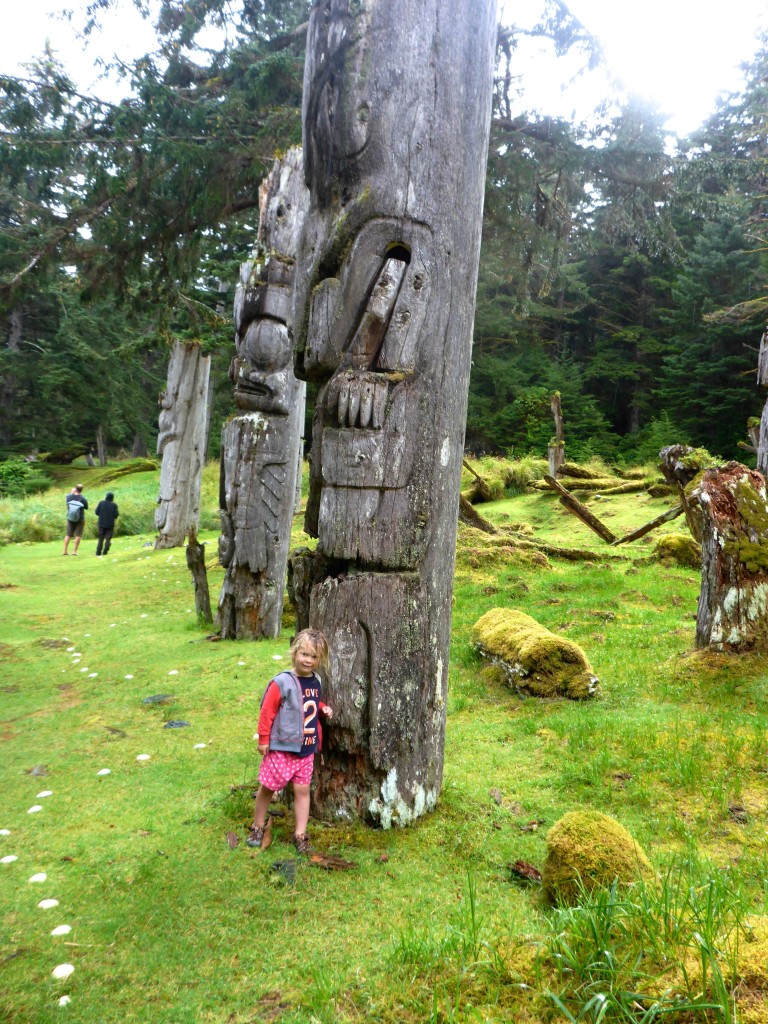
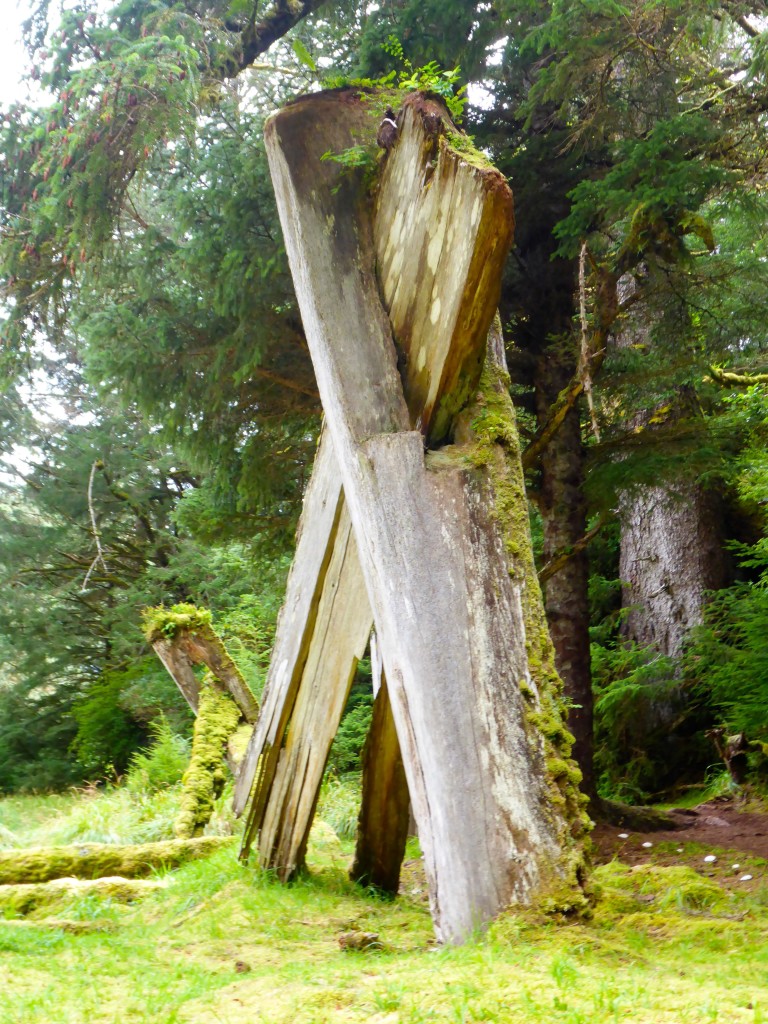
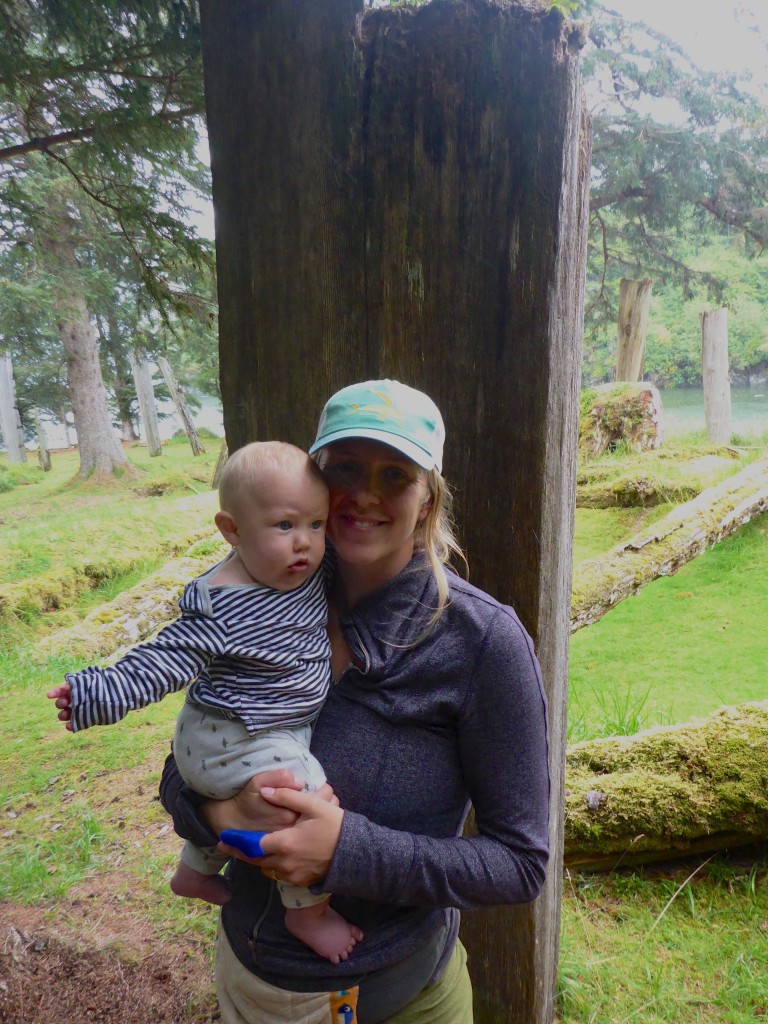
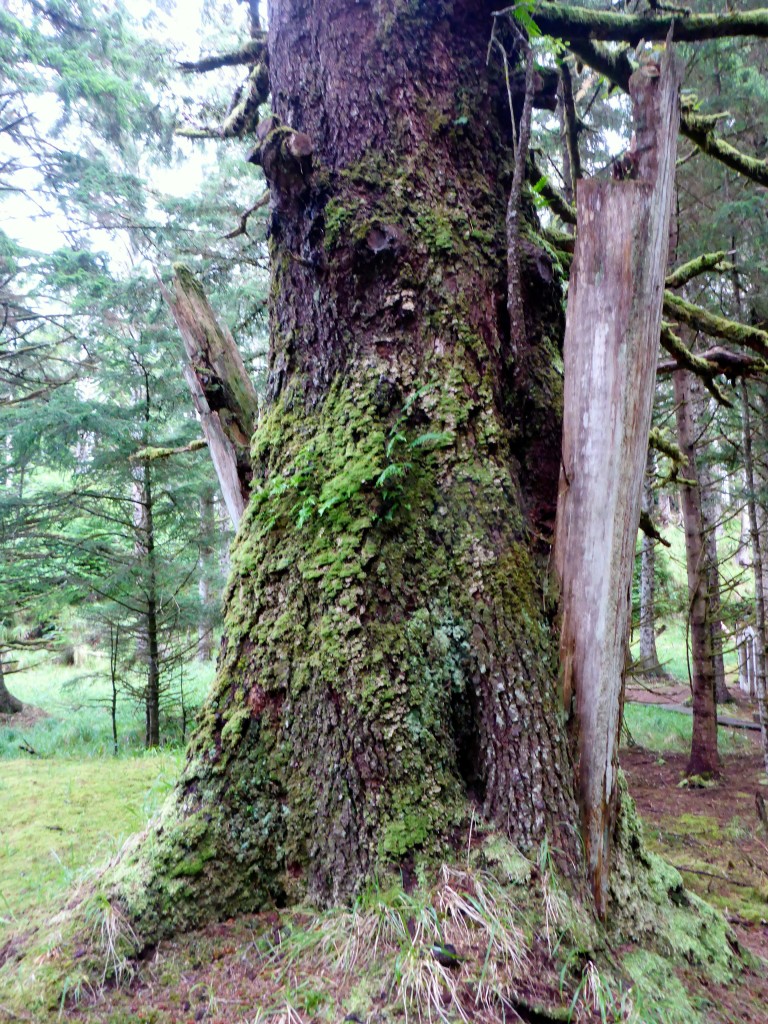
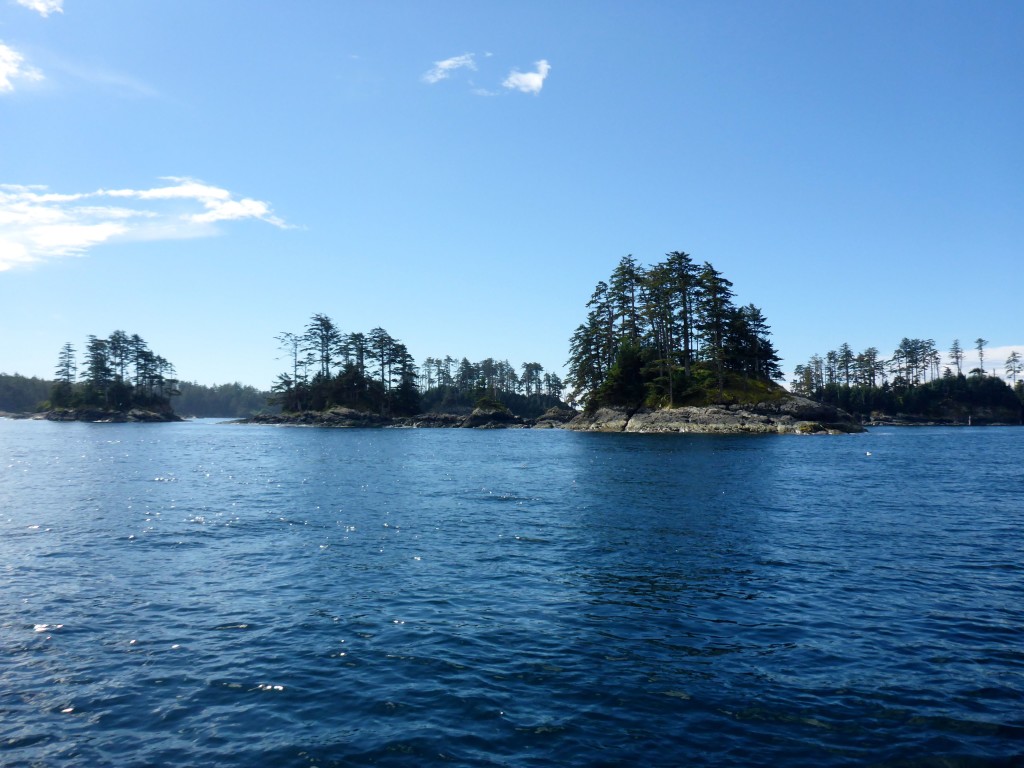
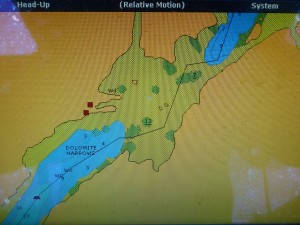
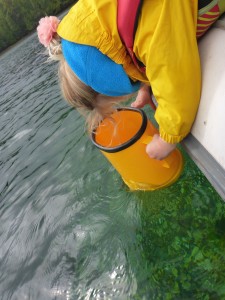
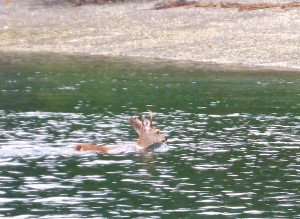
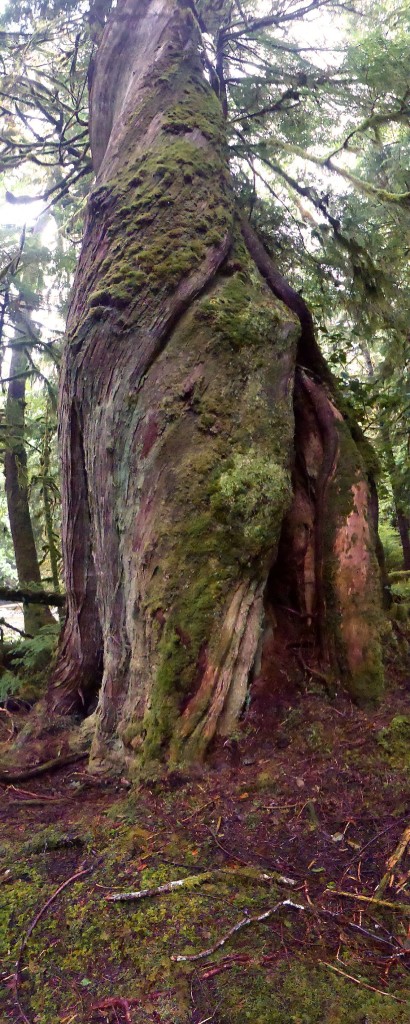
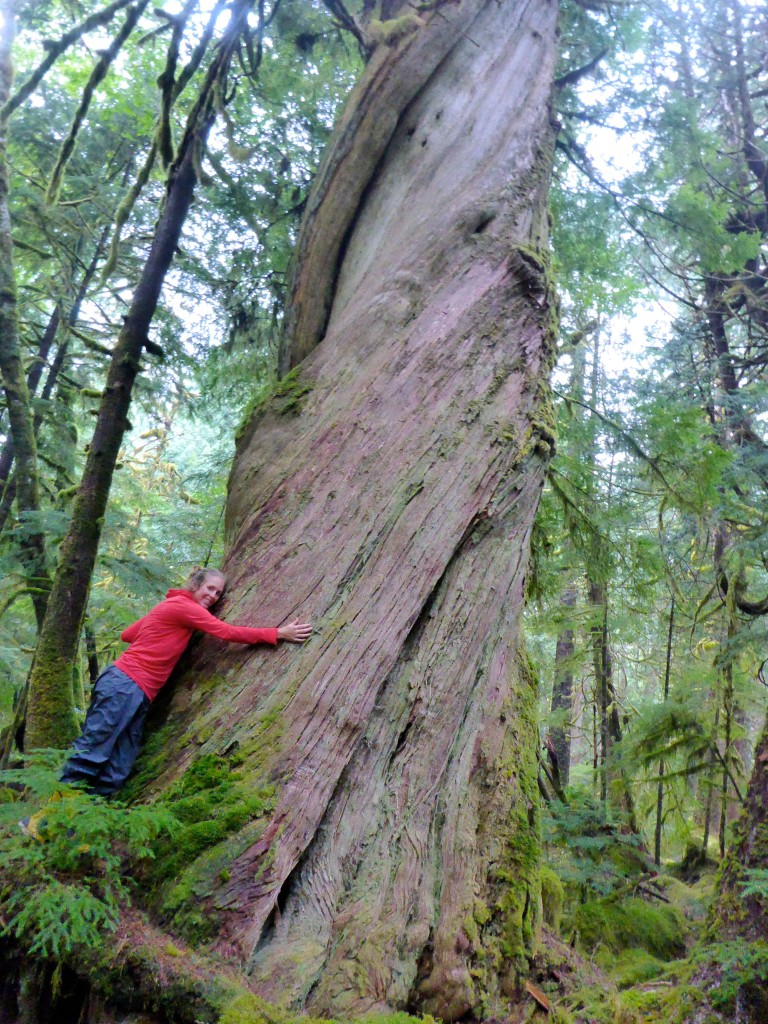
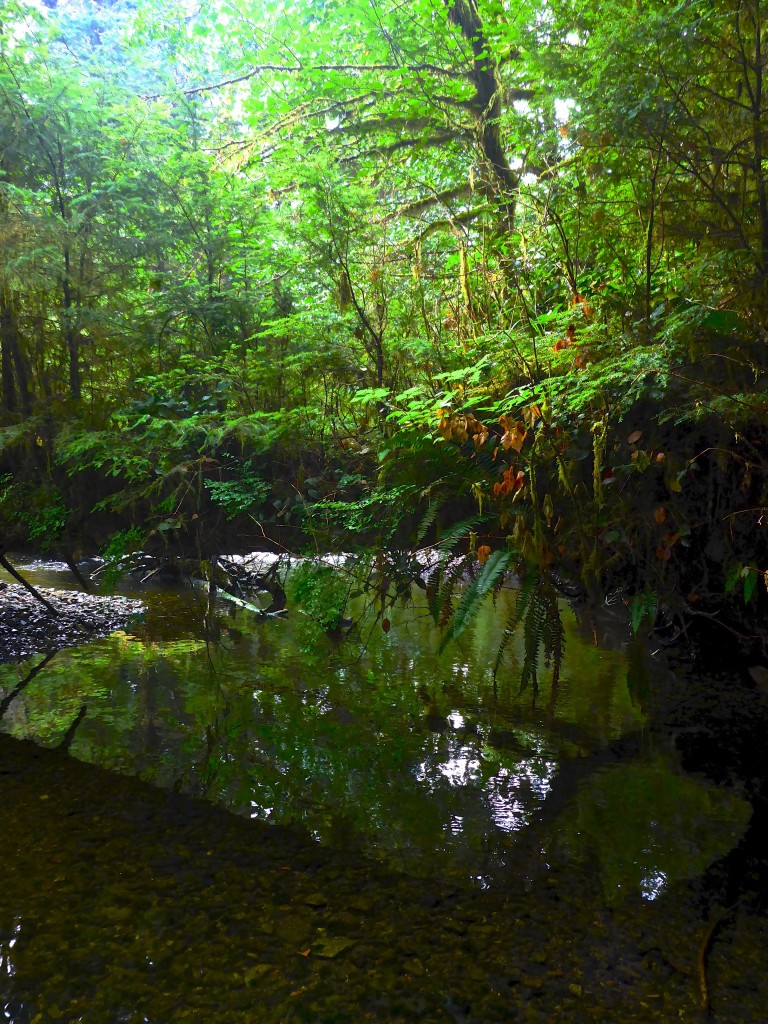
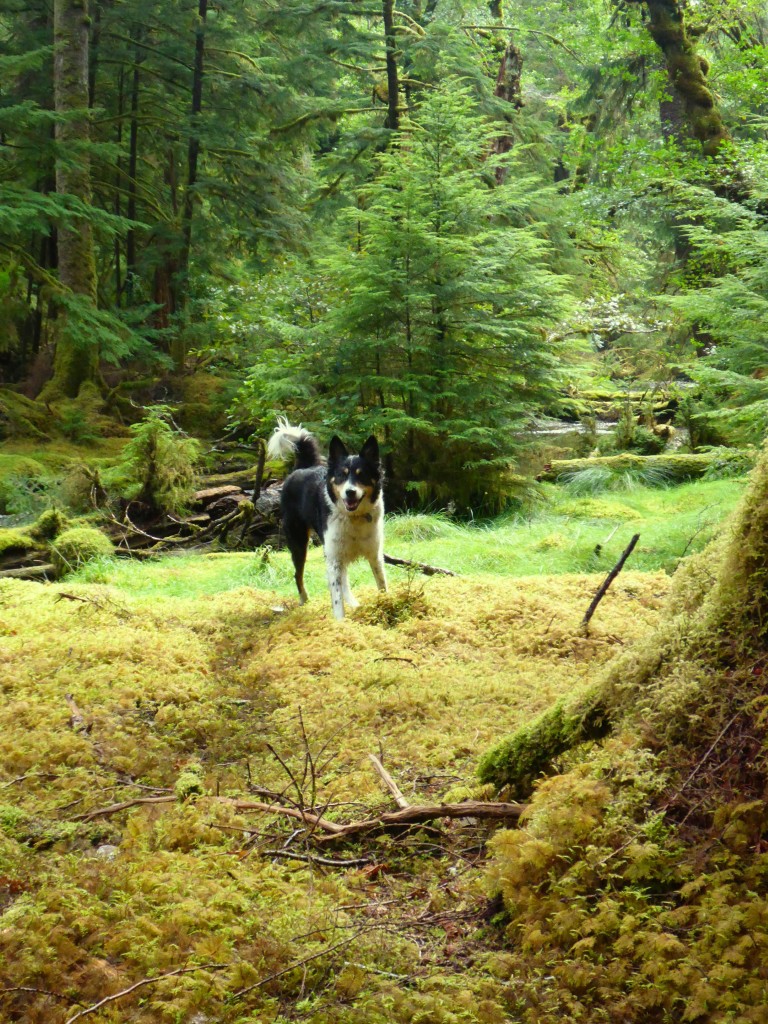
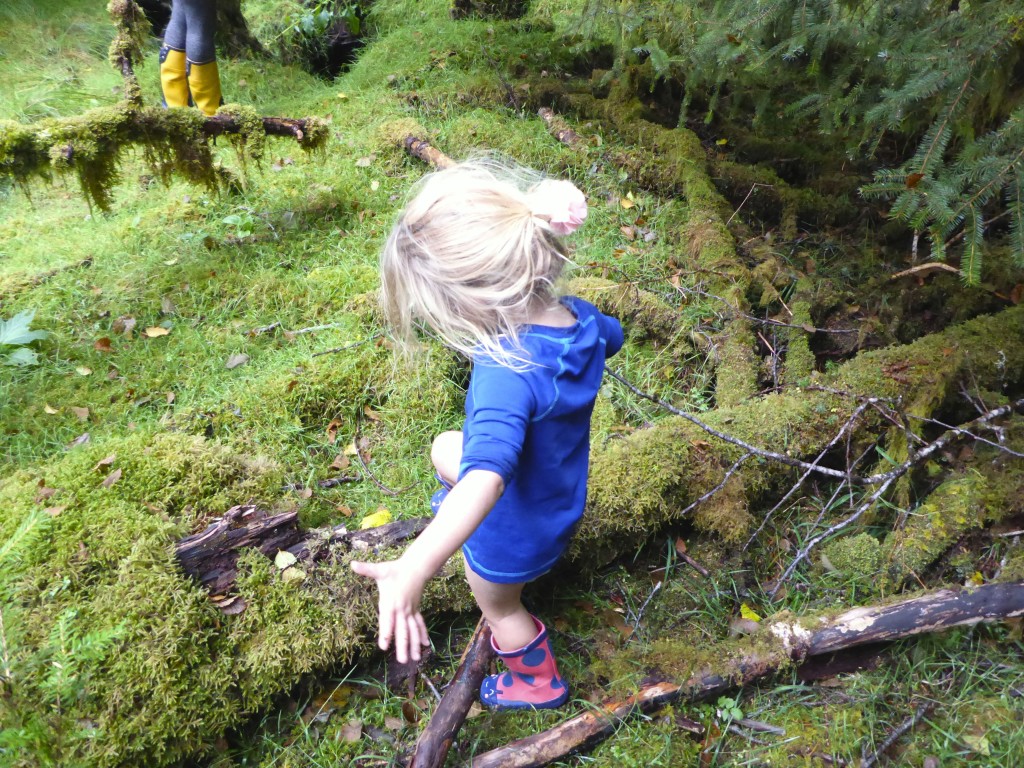
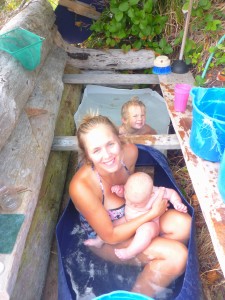
Recent Comments